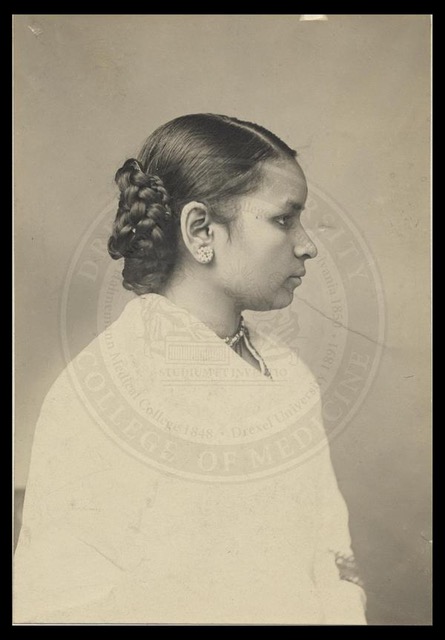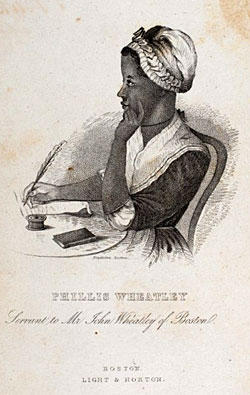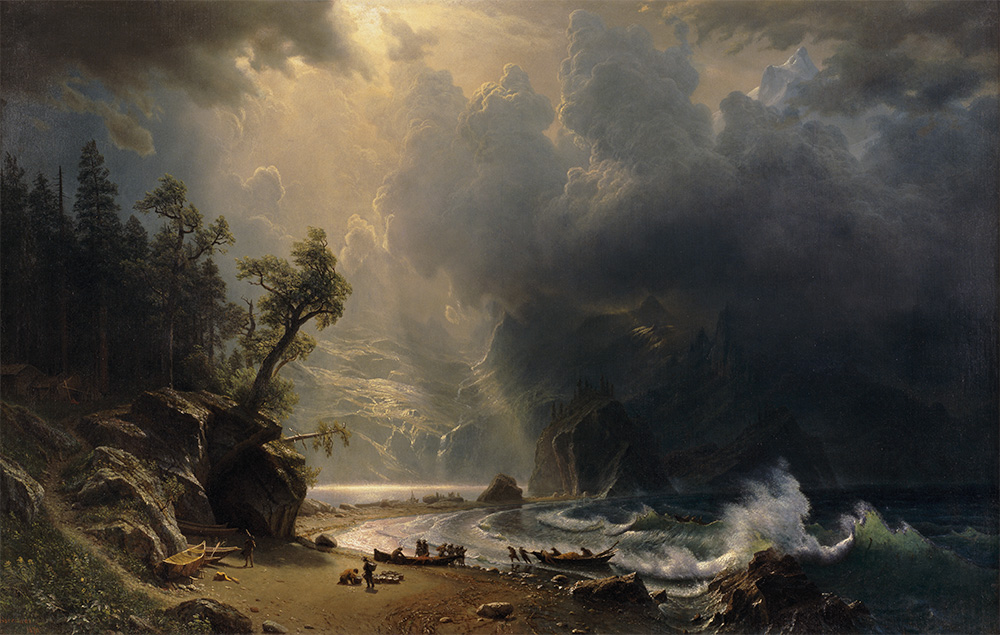Tricks a Girl Can Do
Hannah Maynard (1834-1918) was a Canadian photographer who
created surreal images after the death of her daughter; she was a proto-surrealist.
I will hang myself in picture frames
in drawing rooms where grief
is not allowed a wicker chair
then grimace back at this facade
from umbrella eyes
under a cage of silver hair.
Look! I’ve learned to slice myself in three
to sit politely at the table
with ginger punch and teacake;
offer thin-lipped graves
of pleasantries.I develop myself
in the pharmacist’s chemicals
three women I’m loathe to understand—
presences I sometimes cajole
into modern light and shadow;
we culminate in a gelatin scene—
a daughter birthed from a spiral shell,
a keyhole tall enough to strut through.
Endless Forms, More Beautiful
After a multiple exposure self-portrait of Hannah Maynard, c. 1894
So she keeps her herringbone hands busy with teacups and white flowers
and murmurs to no one what she will create. No nephew sawed in half
will interest her today, no devoted husband measuring buttes
but a suitcase of her own bright follies. The living room pulses on
and off with gunpowder expertly fitted for her flash. Or perhaps
the room becomes a kind of snowbound mausoleum exhibiting her grief
one winter afternoon. (It’s quite impossible to know but let’s presume.)
No more inner voices to wake her from sleep, no more fussy wives
who arrive with meat pies and then hurry their bosoms home
to living daughters. In the frame, Hannahs stand here, sit there, bend over
to brush a bouquet of lilies from other Hannah’s hair.
From house left and then house right solitary Hannahs float like smoke
rings into me. I should have known —the artful dodge, her concentric days,
unwavering dark-sky stare—recognized my own pathology.
Strange Symmetry of Past, of Present
after a self-portrait set in a keyhole: late 1890’s
Actually, the past does slip forward
through a keyhole,
alive, feeding on our half-
recounted facts and figures,
penny-farthing bicycles and pancake
breakfasts annually eaten.
How we learn to study it
in private (the past)
like reading the phrasing
of rare birds or fisherman
sweaters or scat; to unlock
the world in retrospect —
a human kind of heaven.
Take photography, for instance.
Here the 19th century returns
as Hannah poses herself
in crisp black and white;
she’s made a negative space
on the threshold of a life-
sized paper cut-out: keyhole
fit for the movie sets
of Orson Welles (well before
Orson was born).
Her figure stands neither in
nor out of the century but floats.
She’s her own avant-garde parade
a riddle, amulet, sunflower seed;
comic, crazy, genius woman
finding the multiplicity of things —
patterns of desire across a face:
two dead daughters, ghost light, and similar fates.
The Tangible, Intangible
after a photograph by Hannah Maynard
on the death of her child, c. 1884
Afterwards, she surveys the site:
the jostled cups, a buffalo rug
faded burlap of bookcase
overstuffed with tromp l’oeil painted spines.
The sound of the photograph
would be island rain
and the animal cry of the child gone—
In the darkroom she works alone
cajoles waterfalls, brings to light
the floating picture frame,
the doily’s difficult knowledge —
Commonplace days she survives
with a mirror trick, a few glass plates
that echo don’t let go; let go.
Hannah, Decanter, and Cloud
~self portrait at 74
Age is still decanters on the table
the size of small chandeliers
or cloud foam. You, remember,
are the one that is unmade
as of yet, unknown. Medium
merely to an image, a woman
studio-posed. Self-portrait
developed for the afterlife—
our ticker-tape world
of tableaus and combs
circling on. And. Then. Somehow
your barnacled vessel
lit from within like a carriage
clock or sea-washed amber stones.
Have you been taken?
the Victorians inquired; from flesh
into silver salts, into gaslight paper
or gold? Everyone becoming older.
Your gaze darts forward, lifts
beyond the mayor’s clapperboard
home, the dead dove, the séance, the bones.
One unknowable instant—
even as the aperture quietly
holds, even as the light
decants over gloved hands
that turn into clouds.
Don’t tell me this is only a story.
Tell me there’s more to our lives
than jigsaws and doorknobs,
more than tumbleweed, sediment or sex.
We live for the tunnel, the years signatured
together into the surreal, for our art
imperfect and striving.


















